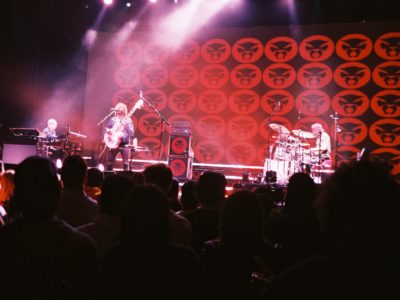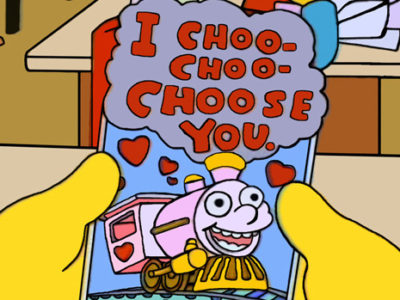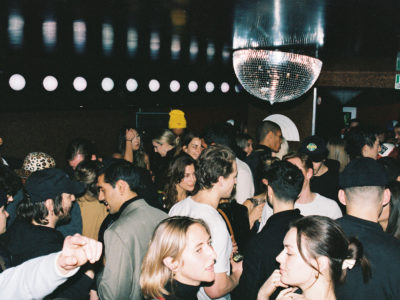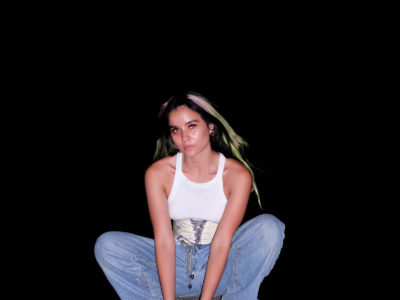
Tomboy Cool: Vashtie Daydreams about ’90s New York
Tomboy Cool: Vashtie Daydreams about ’90s New York
WORDS BY : JOHN MARTIN TILLEY
Vashtie is one of those creatives you can’t help but envy — rather than talking about the things she’s going to do, she goes out and does them. When she looked around in the early 2000s and didn’t see the world she wanted to see, she went out and created it for herself.
Growing up, her older brother would share with her his wild stories about ’90s New York. So when she finally moved there, she had some high expectations. Unfortunately, the culture she found was very different from what his stories had espoused. So, she she took things into her own hands; she started her own party, launched a clothing line and made a series of music videos — effectively shaping the community to match her early vision.
Back then sneaker culture wasn’t as pervasive with girls as it is now. However Vashtie, an OG Jordan-wearing tomboy, had the foresight to make her clothing line, VIOLETTE unisex at a time when such a thing was still rather alien. She was also the first girl to design a Jordan, an honor she still holds dear.
These days, she’s deejaying top-billed parties and keeping it 100 with her blog. WW caught up with this nightlife darling to discuss all her accomplishments, and how she manages to balance so much creative energy in a changing world.

Tell me about your style. You were a pioneer of women appreciating streetwear.
I was always into streetwear and sneakers at a time when that wasn’t very common. The streetwear world was much smaller than it is now. Girls didn’t commonly wear sneakers or Jordans going anywhere; being a tomboy was really not okay — especially in New York City. I was always sort of dressed that way and so I stood out. I worked at Stussy, which was owned by James Jebbia (who started Supreme). So I was in that world — wearing Supreme in ’99.
I can’t even imagine no one wearing that stuff today! You have so many creative outlets; how did you get into all these different things?
It’s a long story; I came to New York in 1999 to study film at the School of Visual Arts, specifically directing and cinematography. When I graduated school I was shopping around my reel looking for directing work, so I did a lot of smaller jobs here and there. Then I got asked to be Creative Director at Island Def Jam, did that for a year, but ultimately left because I wanted to pursue other personal projects. In 2007, I started directing more videos — I directed Justin Bieber’s first video, I worked with Kendrick Lamar, Solange.
You worked with a lot of people who later did very well for themselves.
I was friends with a lot of people who were unknown at the time but are now big names. Around 2008 I was also writing for my blog, which was a fun way for me to connect with people. I was friends with Cudi, who was also unknown to the world at that time. On my blog I would just share random going-out stories and things like that. Then in 2010, I became the first girl to design a Jordan, again because I was sort of known as the girl who loved Jordans and wore Jordans. I started doing my own party in 2006 called 1992. It was featured in i-D and New York Times; we were flown to Paris and Amsterdam to do the party. A Tribe Called Quest asked me to help him with his party, and then we started doing this party every Friday night at Santa’s. Drake actually shouted me out recently on his song, “Walk It Like I Talk It.” He says, “With Vashtie at Santa’s,” because he used to come to that party. I’ve had collaborations with Puma, I did two collections of footwear and apparel; I did a G-Shock collaboration; I’ve deejayed for Madonna, Drake, Chance the Rapper, Dior.
I’m interested in this party, 1992. Tell me more about it.
We started it in 2006. At the time New York City had kind of adopted this VIP, dress-code thing, whereas in the ’90s it wasn’t necessarily that way. Club culture went from being fun and creative to something else. I was too young to really experience the ’90s, but club-kid culture was something I was drooling over. So when I finally got to New York and wanted to go to a fun club, the club was VIP; there was a dress code and bottle service. So 1992 was sort of against that, wanting to create a space that was in celebration of the ’90s, but also welcoming to everyone who came.
Where are you from?
Albany, New York — upstate.
So you were really close to all of it and knew about it.
My brother was also eight years older than me, gay and into voguing and club-kid culture. He would go to New York on the weekends and tell me all the stories about Michael Alig, the Limelight and that really had an influence on me.
It seems like the ’90s was the last time when there was really an iconic place that everybody went to go dancing, and now it’s turned into parties. You must have seen New York change quite a bit. How do you feel about nightlife in NYC now?
You know, I’ve grown to be a more positive person, so the way I see it now, I’m really accepting of how it is now. For a long time I was really sad. I think that we’re getting somehow a little closer to what New York was like in the ’90s; back then it wasn’t all so segregated, I knew straight boys who would go to gay clubs because they liked the music or whatever. It wasn’t this weird thing where it was like, you can’t go there because those people go there. I grew up when there was a stigma about being a person of color in the wrong place or LGBTQ. Whereas now I’ll talk to people who will just show up for a rock show or a young person who doesn’t necessarily identify with the queer community is like, “What’s the big deal if I hang out here?” You know? In that essence, I feel like right now it’s inclusive in a very positive way. As far as club culture goes, it’s now a money-making machine; there’s not that fun aspect anymore. Even if there is a fun party, they have to travel around. There isn’t a home base club that represents that wonderland of sorts. Santa’s is the last place I can think of; it was close to the Financial District. It was just a fun place; you could go for a reggae party, a house party, always something
different.

Nightlife has such an interesting place in the creative industries, how do you feel about that? What is your take on nightlife’s connection to other creative fields?
I always wanted to be an artist when I was a kid, and I think that even when I looked back on it — and I’ve never really thought about this until now — but the artists I always loved were intertwined with nightlife, like Andy Warhol and Madonna. I remember seeing artists like that on MTV when I was a kid. I knew Andy Warhol would go to Studio 54 or Madonna would go to Webster Hall and had her Bedtime Stories release party there — I remember MTV broadcasting that. Also, I find that artists are usually nocturnal. So there’s this connection too where you can meet with other creatives. There’s a lot of collaboration. I’ve met a lot of artists in a nightclub that I ended up working with or just making connections with in business. Nightlife is a relief in a way. It’s a judgment-free zone. It’s where you go to dance and have fun.
Tell me more about VIOLETTE.
The brand really started from me being a tomboy and wanting to see clothes that I would wear. I would always be wearing men’s clothing. I wanted to create a brand that was unisex. I was designing the shirts myself, printing them and shipping them myself. There weren’t many representing my style at the time. Then through that I did the Jordan collaboration. It’s evolved in a really nice way.
I’m kind of confused about what it actually means to be a deejay. How would you describe the art of deejaying, other than just picking songs?
Let me just clarify, there are a lot of deejays, and a lot of not-so-experienced deejays. I won’t say good or bad because I don’t like those terms, but there are all kinds of deejays. There are deejays who just randomly pick songs and play them, there are those who will hit play and are not actually deejaying. A real deejay is someone who knows how to mix from song to song, who can read the psychology of the room. If I go to a hip-hop club I know I should play hip hop, which is an easy gig. Most up-and-coming deejays know that playing trap music is the easiest thing of all time, but to play a crowd takes more. I recently did a Tommy Hilfiger fashion week event where there were so many different kinds of people in the room, including the people from the company, and a lot of them. You know, like Tommy Hilfiger himself was there. And they have said that they love rock music and classics. So if you’re in a room with Nicki Minaj and Tommy Hilfiger, what do you play? You want to satisfy everyone. For me, I love music. I have a deep connection with music, but also I know a lot of music, so I know that I can play Fleetwood Mac. I can also play Tom Petty, along with a lot of other things that will satisfy the room. So for me it’s about knowing music, knowing how to blend music. A lot of deejays don’t blend, they just go from song to song and disrupt the crowd. There’s also tech that you need to know within deejaying. Ultimately my job is to make the crowd feel good and get people dancing.
Amen.







